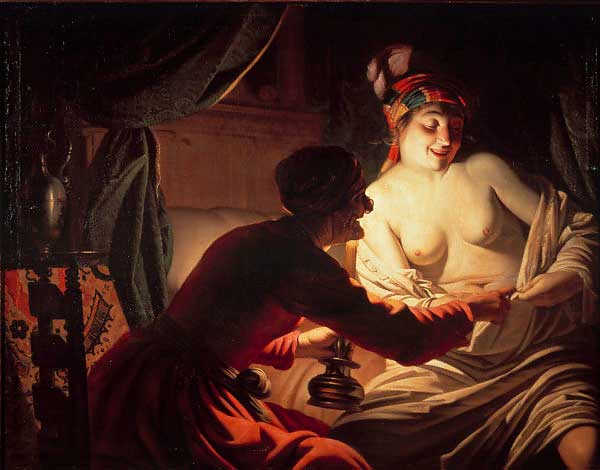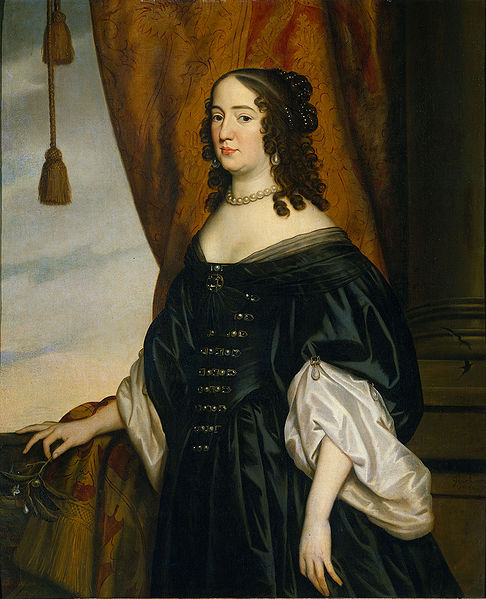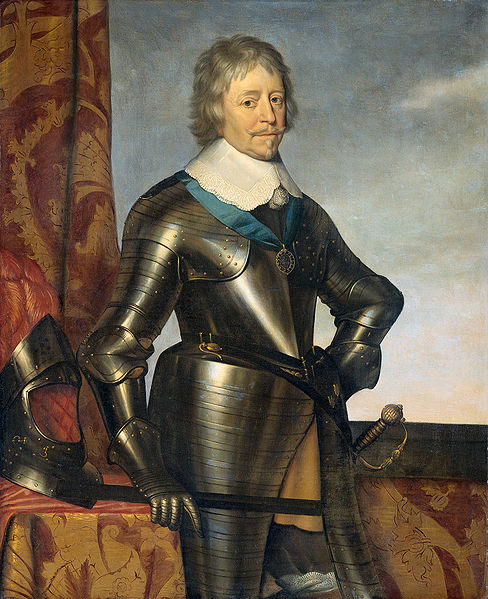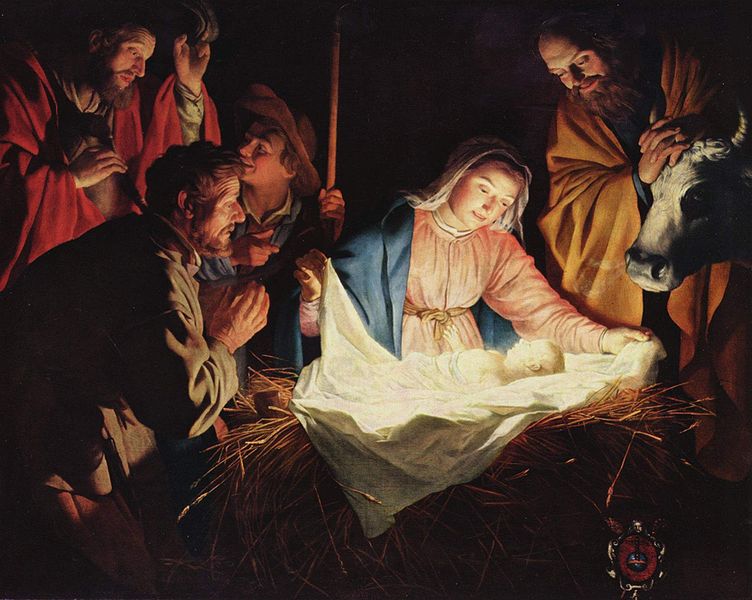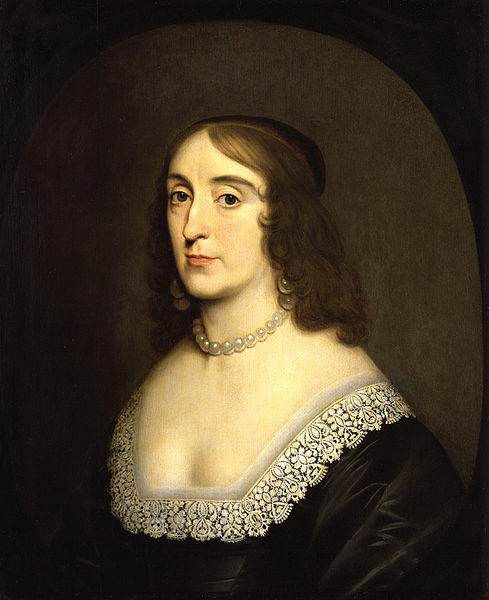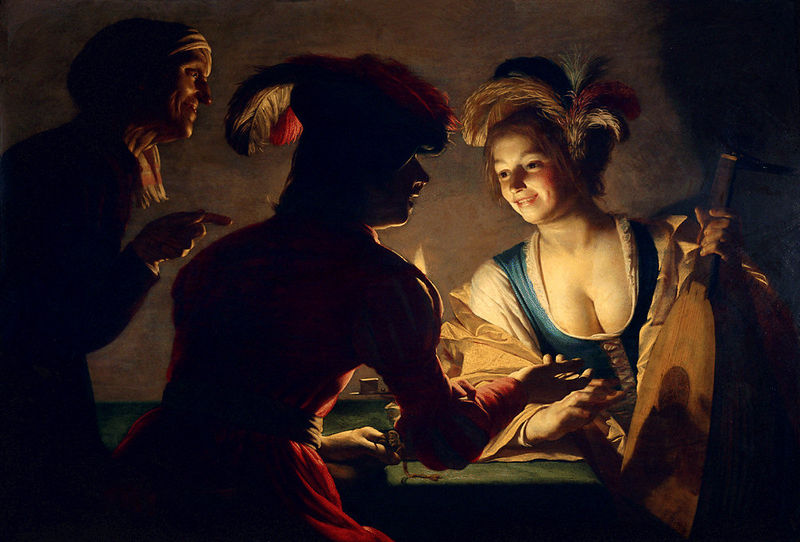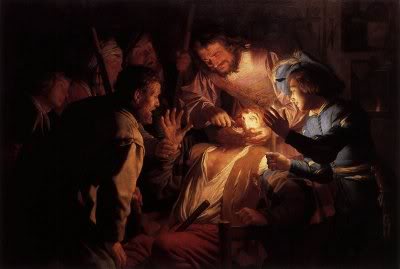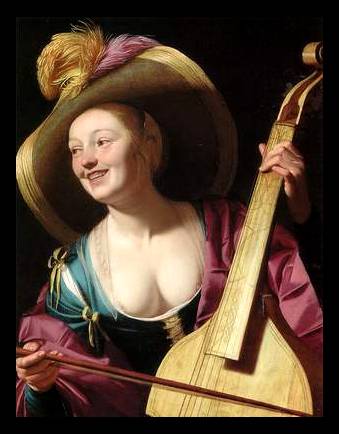<Back to Index>
- Inventor Henry George "Harry" Ferguson, 1884
- Painter Gerard van Honthorst (Gherardo delle Notti), 1592
- Mughal Emperor of India Shahanshah Aurangzeb Alamgir I, 1618
PAGE SPONSOR

Gerard van Honthorst (November 4, 1592 – April 27, 1656), also known as Gerrit van Honthorst and in Italy as Gherardo delle Notti for his nighttime candlelit subjects, was a Dutch Golden Age painter from Utrecht.
He was initially trained at the school of Abraham Bloemaert, who exchanged the style of the Franckens for Italianate models at the beginning of the 16th century. Honthorst travelled to Italy in 1616, where he was influenced heavily by the style of Michelangelo da Caravaggio. Returning home in about 1620, after acquiring a considerable practice in Rome, he set up a flourishing school in Utrecht. Together with his colleague Hendrick ter Brugghen, he represented the so-called Dutch Caravaggisti. In 1623 he was president of the Guild of St. Luke in Utrecht, when he also married. He soon became so fashionable that Sir Dudley Carleton, then English envoy at The Hague, recommended his works to the Earl of Arundel and Lord Dorchester. In 1626 he hosted a dinner for Rubens, and painted him as the honest man sought for and found by Diogenes.
Queen Elizabeth of Bohemia, sister of Charles I of England and Electress Palatine, being in exile in the Netherlands, commissioned Honthorst as painter and tutor to teach her children drawing. Through her Honthorst became known to her brother Charles I, who invited him to England in 1628. There he painted several portraits, and a vast allegory, now at Hampton Court, of Charles and his queen as Diana and Apollo in the clouds receiving the Duke of Buckingham as Mercury and guardian of the King of Bohemia's children. Also at Hampton Court hangs Honthorst's more intimate group portrait of "The Four Eldest Children of the King of Bohemia," which depicts the two eldest most conspicuously as Diana and Apollo. At the Court of Charles I Honthorst was praised by Lord Arundel for his ability to paint in the style of Caravaggio's, especially his colouring, which was then much esteemed in Rome.
Honthorst
became known for his use of chiaroscuro,
or nagtlichten,
painting many night scenes. Joachim von
Sandrart gave
the measure of Honthorst's popularity at this period when he says that
he had as many as twenty apprentices at one time, each of whom paid him
a fee of 100 forms a year. After
Honthorst left England, he returned to Utrecht. He had a high
reputation as a painter among his peers. In Utrecht, Honthorst
succeeded in preserving the patronage of the English monarch, for whom
he finished in 1631 a large picture of the king and queen of Bohemia
and all their children. For Lord Dorchester about the same period he
completed some illustrations of the Odyssey;
for Christian IV of
Denmark,
he composed incidents of Danish history, of which one example remains
in the gallery of Copenhagen. In the course of a large practice,
Honthorst had painted many likenesses of Charles I and his queen, the
duke of Buckingham, and the king and queen of Bohemia. Honthorst
now became court painter to the Princess of Orange, settled (1637) at
The Hague, and painted in succession at the Castle of Ryswick and the Huis ten Bosch. The time not consumed in producing
pictures was devoted to portraits. Honthorst's
works are numerous, and amply represented in English and Continental
galleries. His most attractive pieces are those in which he cultivates
the style of Caravaggio, often tavern scenes with musicians, gamblers
and people eating. He had great skill at chiaroscuro, often
painting scenes illuminated by a single candle. Some
of his more interesting pieces were portraits of the Duke of Buckingham
and Family (Hampton Court), the King and Queen of Bohemia (Hanover and
Combe Abbey), Marie de Medici (Amsterdam Stadthuis),
1628, the Stadtholders
and their Wives (Amsterdam
and Hague), Charles Louis and Rupert, Charles I's nephews (Louvre, St
Petersburg, Combe Abbey and Willin), and Lord Craven,
(National
Portrait Gallery, London). Honthorst's
early style can be judged by a Lute-player (1614) at the Louvre,
the Martyrdom of St
John in S. M. della
Scala at Rome, or the Liberation of
Peter in the
Berlin Museum; and his later style is that of the House in the Wood (1648), where he appears to
disadvantage by the side of Jordaens and others. Honthorst
was succeeded by his brother William, born at Utrecht in 1604, who
died, it is said, in 1666. William lived chiefly in his native place,
temporarily at Berlin. But he has left little behind except a portrait
at Amsterdam, and likenesses in the Berlin Museum of William
and Mary of England.
